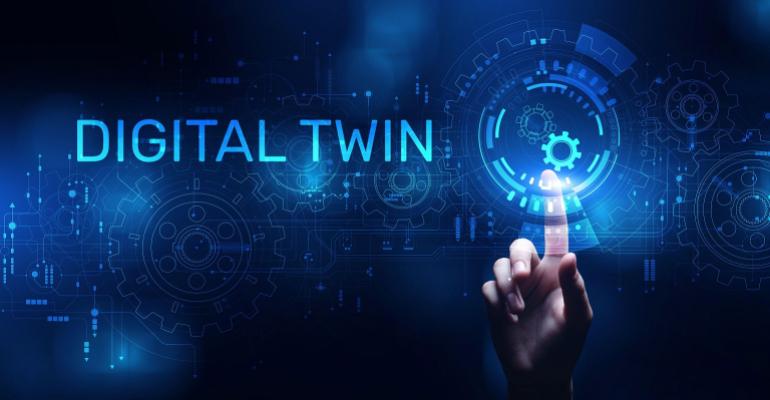With the surge in cloud and artificial intelligence technologies, data center demand is being driven up. In fact, according to CBRE, supply in primary markets increased by 738.2 MW (19.2%) year-over-year, with AI driving a large proportion of that demand. As facilities brace themselves to deliver more capacity faster, they are also being called upon to do so within financial constraints and while meeting upcoming ESG regulations. Digital twins might be key to navigating these data center pressures.
New Regulatory Pressures
In 2022, the Securities and Exchange Commission announced that it would create rules and standardize the way organizations make climate-related disclosures. This means companies will be required to disclose material risks, including physical risks and transition risks, related to climate change. In spring 2024, these rules are set to be finalized. If this standardization is anything like the European Union’s Energy Efficiency Directive (EED) and Corporate Sustainability Reporting Directive (CSRD), then large enterprises will be required to disclose their carbon usage – from both a direct and indirect standpoint.
For a data center – or an organization reliant on a data center – this is likely to mean that every emission must be accounted for. This needs to be done at a granular level. For example, if a new server is purchased to increase capacity, the carbon associated with the server’s transportation, maintenance, deconstruction, etc., all need to be reported.
This new inability for companies to push greenhouse emissions downstream is a massive industry shift, but it’s not one that should be feared. By having a deeper knowledge of the carbon emissions and the lifecycle of equipment and hardware, facilities can develop strategies to increase efficiencies. This is not only better from an environmental perspective, but also improves the bottom line – and is something data center digital twins can help with.
Remove, Decommission, Repurpose
Even at the end of a product’s lifecycle, there are carbon emissions associated with the decommissioning. That’s why, with any environmental strategy, organizations should be looking at a data center reuse and recycle plan to offset the emissions associated with the purchase, transportation, and maintenance of new hardware.
Even if entire data center units cannot be reused, facilities or technology partners can look for opportunities to reuse specific low-level applications, parts, and components that still have life.
Ultimately, data centers that accurately monitor the reuse or decommissioning of each piece of hardware will be able to track their direct and indirect emissions, in line with potential new regulatory requirements. However, gaining oversight of every piece of hardware is by no means a simple task. Luckily, technology is available to facilitate the process. For example, a digital twin – a virtual replica of a physical data center – offers visibility into the physical infrastructure on-site and can even be used to track assets for reuse in the virtual loading bay and then guide redeployment.
Leveraging the Digital Twin To Unlock Sustainability, Cost Efficiencies
The environmental benefit of deploying a digital twin stretches far beyond tracking assets. With this technology, facility managers can analyze data center hardware, configurations and updates virtually, before they implement changes on-site. This creates a testbed for exploring the most sustainable options to minimize energy consumption and save money.
A digital twin’s ability to provide customized reports and dashboards also helps data center managers make informed, sustainable decisions – as well as track the necessary information required for upcoming regulations.
Beyond environmental and capacity pressures, the data center industry is grappling with tightened budgets and rising energy costs. Digital twins can help minimize the impact of this while also realizing green benefits. We’re already seeing this take place within facilities. For example, one of the world’s largest commercial real estate and services businesses deployed a digital twin for a financial services customer. By integrating a digital twin, the organization could monitor live data and embed the technology within its existing processes across maintenance schedules and new deployments, as well as larger capacity project planning. Facility managers could then track energy consumption and optimize efficiency. As a result, the financial services company was able to increase energy efficiency to 81%, minimizing the environmental pressures on it. In turn, this led to a $1.15 million saving in energy costs across a two-year period.
Improved Lifespan and Efficiency
Ahead of another year of tough financial constraints and environmental scrutiny, data centers that deploy digital twins will find themselves improving the lifespan and efficiency of their facilities. In short, this is because digital twins help organizations make more environmentally friendly decisions that reduce energy costs. And, with access to digital twins, organizations can then monitor the performance, functionality, and potential issues of the same hardware and make decisions that improve the overall lifespan of technologies in the data center. The environmental, efficiency, and improved lifespan benefits are all key tactics to maximize capacity when companies rely on data centers more than ever.
Dave King is Senior Product Marketing Manager at Cadence Design Systems.





